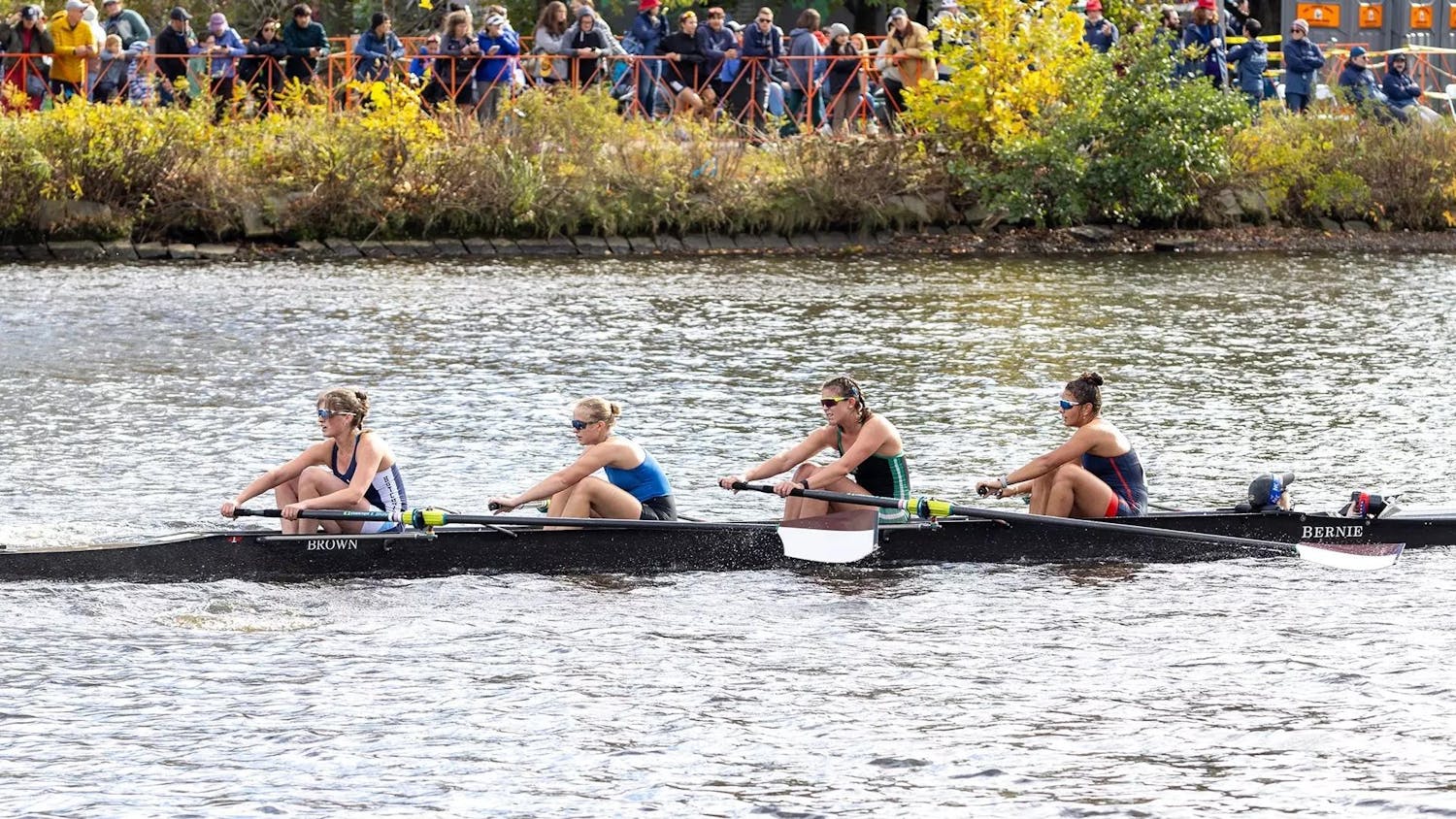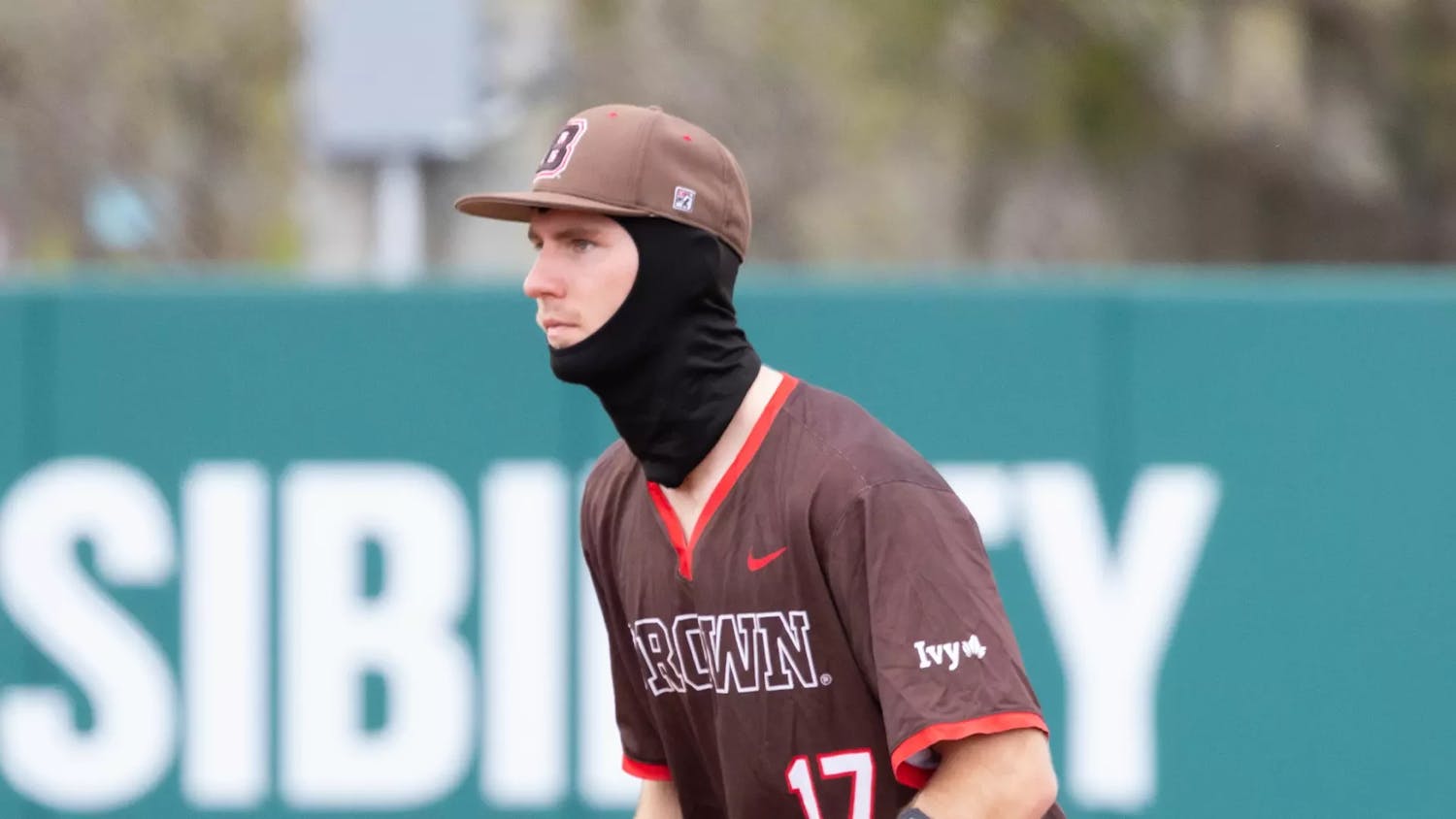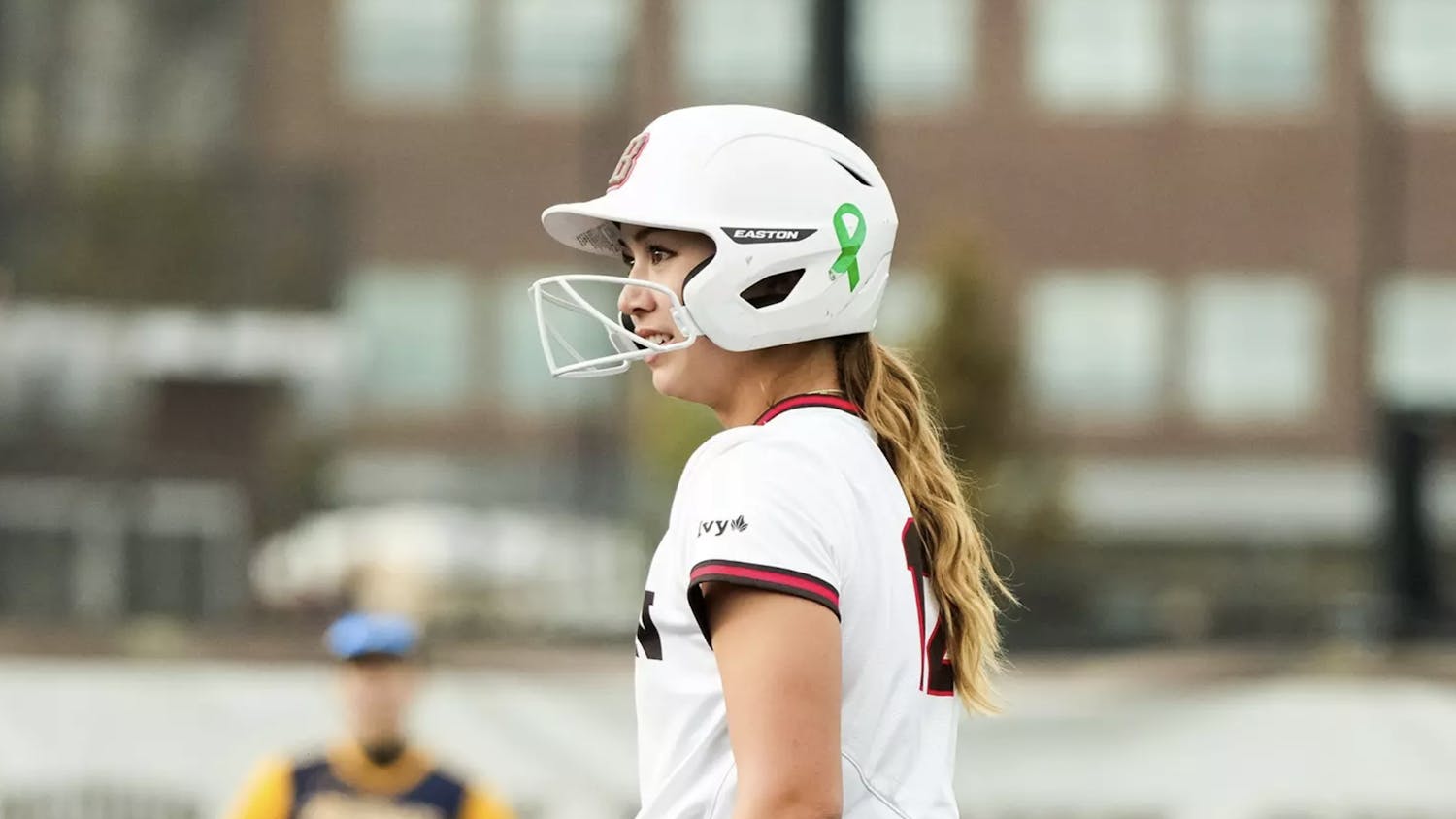By accepting less than 9 percent of its nearly 31,000 applicants, Brown is able to pick and choose the best and brightest from across the nation and even around the globe. And yet when recruiting elite athletes, the University often finds itself at a disadvantage. As a member of the Ivy League, Brown is hindered by strict academic requirements and scholarship restrictions that severely limit its pool of potential athletes. So what makes an athlete come to Brown?
Love at first sight
Athletes at Division I schools choose their colleges based on a variety of factors, such as a school's winning tradition, the potential to win a national championship or the reputation of a coach. But athletes at Brown cited all these reasons as secondary to the quality of education and the atmosphere on campus.
"First and foremost, it is a great opportunity to get an Ivy League education," said Katie Hyland '11, captain of the women's field hockey team. "Secondly, the girls here on the team felt like my family from the moment I met them. And then the coaching staff. I knew I would be in good hands as a freshman and throughout my career with their guidance."
Young players may also choose Brown over other athletic programs because they will be able to make an immediate impact rather than ride the bench for their first years.
"The big thing I looked at in my decision was being able to play as a freshman and being able to contribute early," said Sean McGonagill '14. "I considered Brown strongly because they needed a point guard, and it was a good opportunity where I could come in and contribute right away."
For many, the ability to get an Ivy League education while playing the sport they love is a dream come true. But some athletes are not convinced until they are exposed to the campus for the first time.
"Initially, I was skeptical about the type of atmosphere at Brown — maybe it would be preppy, maybe a little snobby," said Niina Al-Hassan '14, who throws the javelin for the track and field team and hails from Pullman, Wash. "But when I came for my official visit, I just fell in love with it. I loved the campus. I loved the people. And the academics were important, but it wasn't a competitive nature."
"I'm from California, and I just love it here," said Bailey Wendzel '13 of the women's volleyball team. "There's a great balance between academics and athletics, but also the vibe is just more cohesive to who I am. There's a feeling of belonging here."
A different breed
Athletes at Brown are different than those found at other institutions, according to many coaches. Most spoke of the "balance" that players maintain between being elite Division I athletes and dedicated scholars.
"When I'm recruiting athletes, they want the best of both worlds," said Danielle Griffiths, head coach of women's golf. "They are looking for that balance. They want the best education that they can have in combination with golf."
The same aspects of the University that appeal to a class valedictorian or a top violinist also draw athletes. With its open curriculum, welcoming atmosphere and generally relaxed state, Brown attracts a specific type of athlete.
"Brown not being the HYP — Harvard, Yale or Princeton — many times the kids are more down to earth," said Diane Short, head coach of women's volleyball.
Because of the University's limited athletic budget and position in the Ivy League, it becomes virtually impossible for coaches to appeal to five-star recruits.
"We need to find that rare kid who is a high-level basketball player who also wants a high-level education," said men's head basketball coach Jesse Agel. "If you want to be a professional basketball player, and you're good enough to play at the top levels, that's going to help you to prepare to play professionally. But if you want to be in business, when it is all said and done, you can't find a better situation than coming to Brown."
As such, it becomes the coaches' job to pitch the school rather than the athletic team.
"We have to sell Brown," said John Murphy, head coach of the No. 6 women's crew team. "If they choose to row in college, they are going to find that we have a good, strong program, but I think the main thing is they need to choose Brown over some other school out there. They really have to want to be a part of the school."
Money matters
If athletes choose to matriculate at Brown, they must either cover the costs themselves or rely on need-based financial aid. The Ivy League has an explicit ban on all athletic scholarships, dating back to the 1954 Ivy Group Agreement stating, "Athletes shall be admitted as students and awarded financial aid only on the basis of the same academic standards and economic need as are applied to all other students."
The lack of money available to athletes affects the recruiting process for certain sports more than others.
"From the financial aspect, it affects the recruiting base," Agel said. "You don't want to waste your time recruiting with someone who is not going to be able to afford it. You have to find somebody who understands that the cost of the education up front is going to play itself out on the back end. You invest x amount now, you are going to have x times 10 coming out."
Many athletes not only denied that the lack of scholarships was detrimental, but also said they were in fact glad for the restrictions.
"It's a different outlook from your sport being a job versus being a voluntary activity," said Allison Galer '11, a former member of the women's basketball team.
"If your scholarship funding is tied to being on a team, you feel more pressure to excel, even if you're really unhappy," said Casey Kelsey '11, a member of the women's crew team. "Because Brown doesn't have any scholarships, there's no one here that doesn't want to be working as hard as we do. It leads to a better atmosphere, because no one feels obligated to be rowing just because they have to retain their scholarship."
The lack of scholarships also attributes to the high number of athletes who decide to "retire," or leave, their sports, said Howard Chudacoff, a history professor who teaches EDUC 0850: "History of Intercollegiate Athletics."
"Basketball is a big part of my life, but I knew it wasn't necessarily my future personally on the court," said Galer, now president of the Brown Sports Business club. "I realized there were a lot of opportunities I wanted to pursue off the basketball floor."
"I just didn't have the same passion for it here," said Dylan Daniels '14, who is contemplating giving up athletics. "And when you're doing something for a minimum 20 hours per week that you're not enjoying, it takes a toll on you. Not having a scholarship makes it easier for me to walk away and do something that I want to be doing."
But the lack of scholarships also leads to a stronger team bond and relationship among players.
"Everyone is so pumped to be doing what they're doing, including in volleyball," said Danielle Vaughan '11, a member of the volleyball team. "I've been on teams where girls are dragging their feet coming to practice, and I really like the idea that if they're on the volleyball team, they still love the game."




